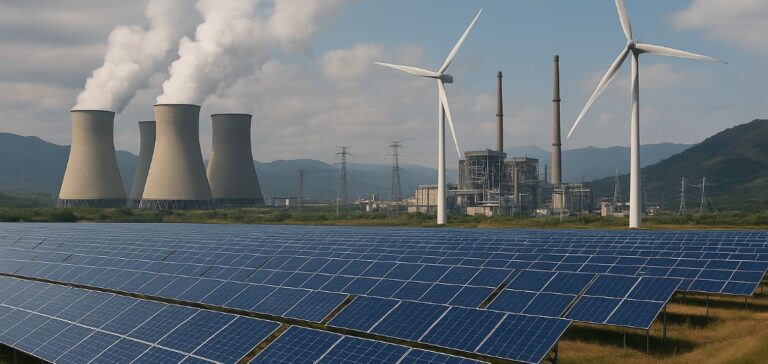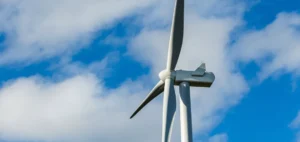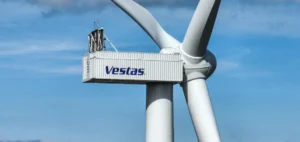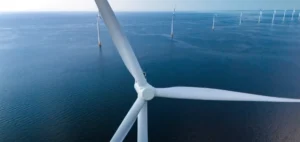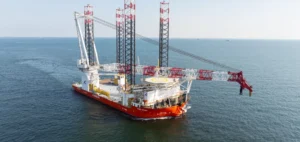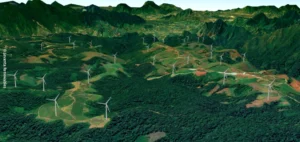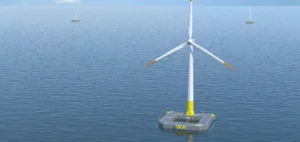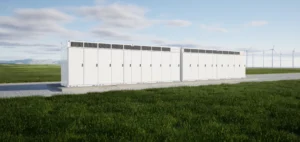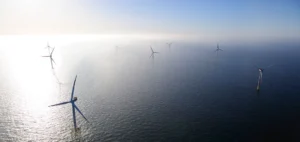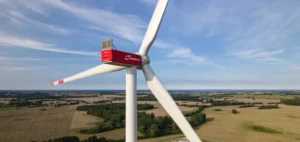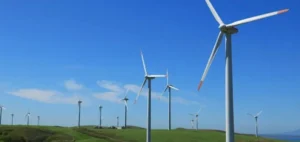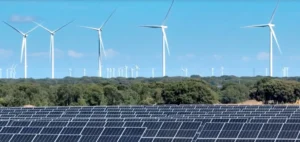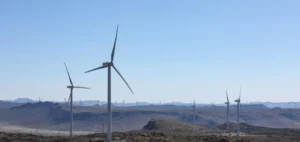China announced that its combined wind and solar energy capacity surpassed for the first time the capacity from thermal installations, mainly powered by coal, AFP reported on April 25. This development has been driven by a marked acceleration in new installed capacities since the beginning of the year.
In the first quarter of 2025, new solar and wind installations totalled 74.33 million kilowatts, bringing total capacity to 1.482 billion kilowatts, according to the National Energy Administration. This level exceeds the installed capacity of thermal energy, which stands at 1.451 billion kilowatts.
An accelerated development of renewable energies
In 2024, China added a record 357 gigawatts of solar and wind energy to its grid, ten times more than the United States, achieving its initial target of 1,200 gigawatts six years ahead of the 2030 deadline. This dynamic contributes to a gradual shift in the energy mix, historically dominated by coal, which still accounts for about 60% of national energy consumption.
The National Energy Administration stated that renewable energy capacity growth in the first quarter of 2025 “greatly exceeded” the country’s total increase in electricity consumption. Yao Zhe, global policy adviser at Greenpeace East Asia, estimated that this trend marks “a structural shift” in China’s power sector and that its carbon emissions are “on the verge of peaking.”
Coal remains a major energy pillar
Despite this rapid progress, coal continues to play a central role. In 2024, China launched the construction of 94.5 gigawatts of new coal-fired plants, accounting for 93% of global construction starts, according to a report by the Centre for Research on Energy and Clean Air (CREA) and the Global Energy Monitor (GEM). Simultaneously, coal production continued to rise, from 3.9 billion tonnes in 2020 to 4.8 billion tonnes in 2024.
David Fishman, executive at consultancy group Lantau, noted that “the intermittency of renewable energies such as wind and solar” makes it difficult to compare them with stable and dispatchable sources like coal. Covering the growth of energy consumption, which increased by 4.3% in 2024 compared to 2023, remains “a significant challenge for a developing country with a large heavy industry,” he said.
Moving towards future climate commitments
Chinese President Xi Jinping stated that China’s efforts to combat climate change “will not slow down,” regardless of “the evolution of the international situation,” referring to the United States’ withdrawal from the Paris Agreement announced by Donald Trump. Mr. Xi also announced that China will present its new climate commitments for 2035 before the 30th Conference of the Parties (COP30), including all greenhouse gases and not only carbon dioxide.


